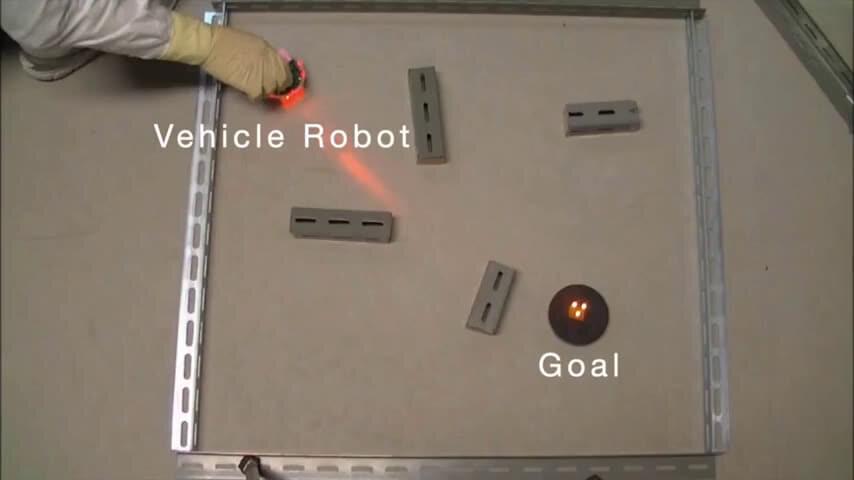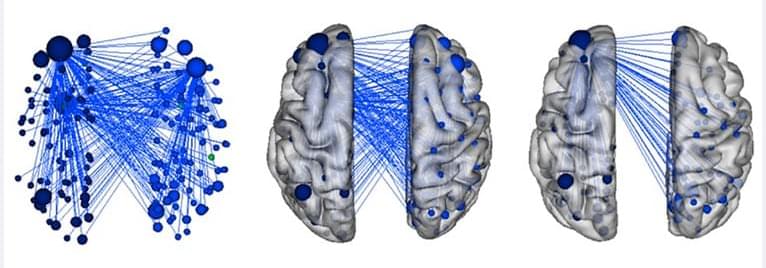Alán Aspuru-Guzik is using AI, robots, and even quantum computing to create the new materials that we will need to fight climate change.





Self-driving Robots, developed at MIT, set sea in Amsterdam canals.
If you don’t get seasick, an autonomous boat might be the right mode of transportation for you.
Scientists from MIT’s Computer Science and Artificial Intelligence Laboratory (CSAIL) and the Senseable City Laboratory, together with Amsterdam Institute for Advanced Metropolitan Solutions (AMS Institute) in the Netherlands, have now created the final project in their self-navigating trilogy: a full-scale, fully autonomous robotic boat that’s ready to be deployed along the canals of Amsterdam.
Full Story:
Self-driving Roboats, developed at MIT, set sea in Amsterdam canals. If you don’t get seasick, an autonomous boat might be the right mode of transpor.
Tokyo space startup Gitai Japan successfully conducted a technology demonstration of its autonomous robotic arm inside the International Space Station last week, a key milestone as the company prepares to provide robotics as a service in space.
The S1 robotic arm performed two tasks: operating cables and switches, and assembling structures and panels. These tasks — common crew activities — can be used in a general-purpose way for a range of in-space activities. The successful demo raised what NASA calls the “technology readiness level” of the Gitai robot to TRL 7. There are nine TRLs in total and hitting all of them will be critical for Gitai commercializing its robots.
The demonstration was performed inside space company Nanoracks’ Bishop Airlock, the world’s first (and only) commercial airlock to be attached to the exterior of the station. Nanoracks — which announced plans last week to launch a fully private commercial space station with Voyage Space and Lockheed Martin — also furnished on-orbit operations, data downlink and the launch opportunity.

Can intelligence be taught to robots? Advances in physical reservoir computing, a technology that makes sense of brain signals, could contribute to creating artificial intelligence machines that think like us.
In Applied Physics Letters, researchers from the University of Tokyo outline how a robot could be taught to navigate through a maze by electrically stimulating a culture of brain nerve cells connected to the machine.
These nerve cells, or neurons, were grown from living cells and acted as the physical reservoir for the computer to construct coherent signals.
AI & computational technology for improving drug discovery & development — mati gill, CEO, AION labs.
Mati Gill is the Chief Executive Officer, of AION Labs (https://aionlabs.com/), a company recently launched and backed by a coalition of pharma and tech leaders, including AstraZeneca, Merck, Pfizer, Teva, Amazon Web Services (AWS), and the Israel Biotech Fund (IBF) and Israel Innovation Authority, to improve the whole drug discovery & drug development process with AI and computational biology.
Mati has an MBA (Healthcare & Innovation) and BS degree in law from Reichman University / IDC Herzliya, and has over a decade of experience in leadership roles in the biopharma industry, including most recently as Head of Government Affairs, Corporate & International Markets, at Teva Pharmaceuticals.
Mati also spent 4 years as Member Of The Board Of Advisors and Directors, at Sanara Ventures, a healthcare investment platform backed by Philips & Teva, providing Pre-seed, Seed and A round financing to young companies.
Prior to teva, mati was chief of staff to israel’s minister of public security.

𝙈𝙖𝙘𝙝𝙞𝙣𝙚 𝙇𝙚𝙖𝙧𝙣𝙞𝙣𝙜 𝙍𝙚𝙫𝙚𝙖𝙡𝙨 𝐁𝐫𝐚𝐢𝐧 𝙉𝙚𝙩𝙬𝙤𝙧𝙠𝙨 𝐈𝐧𝐯𝐨𝐥𝐯𝐞𝐝 𝐢𝐧 𝐂𝐡𝐢𝐥𝐝 𝐀𝐠𝐠𝐫𝐞𝐬𝐬𝐢𝐨𝐧
𝙔𝙖𝙡𝙚 𝙐𝙣𝙞𝙫𝙚𝙧𝙨𝙞𝙩𝙮
Child psychiatric disorders, such as oppositional defiant disorder and attention-deficit/hyperactivity disorder (ADHD), can feature outbursts of anger and physical aggression. A better understanding of what drives these symptoms could help inform treatment strategies. Yale researchers have now used a machine learning-based approach to uncover disruptions of brain connectivity in children displaying aggression.
In the first study of its kind, Yale researchers use machine learning to find large-scale neural connections linked to aggressive behavior in children.
Track code: TD-3
Abstract:
Solar Sails are at the same stage of engineering development as electric motors were in the 1830’s. Each attribute of solar flux has been examined in isolation, such as photon, proton, plasma, and electrodynamic systems. This talk recommends designing a simple baseline system that converges multiple propulsion methods into optimized systems, as is currently done with electric motors. Many convergences can come from this solution space. Once a baseline design is created, AI genetic algorithms can “flight test” and refine the designs in simulation to adjust proportions and geometry. Once a base design is refined, a second AI evolution pass would design fleet systems that flock like birds to optimize performance. These could fly as a protective shield around Mars crewed fleets, provide space based solar power, deploy rapid reaction probes for interstellar comets, and be used in NEO asteroid mining. In the long term, fleets of solar energy management vehicles can provide orbital Carrigan event protection and Martian solar wind protection for terraforming. This talk is also a case study in how technology revolutions happen, and how to accelerate the creation and democratization of technical solutions.
From the 24th Annual International Mars Society Convention, held as a Virtual Convention worldwide on the Internet from October 14–17, 2021. The four-day International Mars Society Convention, held every year since 1,998 brings together leading scientists, engineers, aerospace industry representatives, government policymakers and journalists to talk about the latest scientific discoveries, technological advances and political-economic developments that could help pave the way for a human mission to the planet Mars.
Conference Papers and some presentations will be available on www.MarsPapers.org.
For more information on the Mars Society, visit our website at www.MarsSociety.org.
#MarsSociety #MarsSocCon2021

Delta Air Lines expects 2.5 million passengers to move through the Atlanta airport during the Thanksgiving period. Ahead of the holiday rush, Delta is testing new facial recognition technology to reduce the time it takes between arriving at the airport and getting passengers in their seats.
The company’s senior vice president for customer experience, Ranjan Goswami, said the facial recognition technology has been years in the making and will speed up travel.